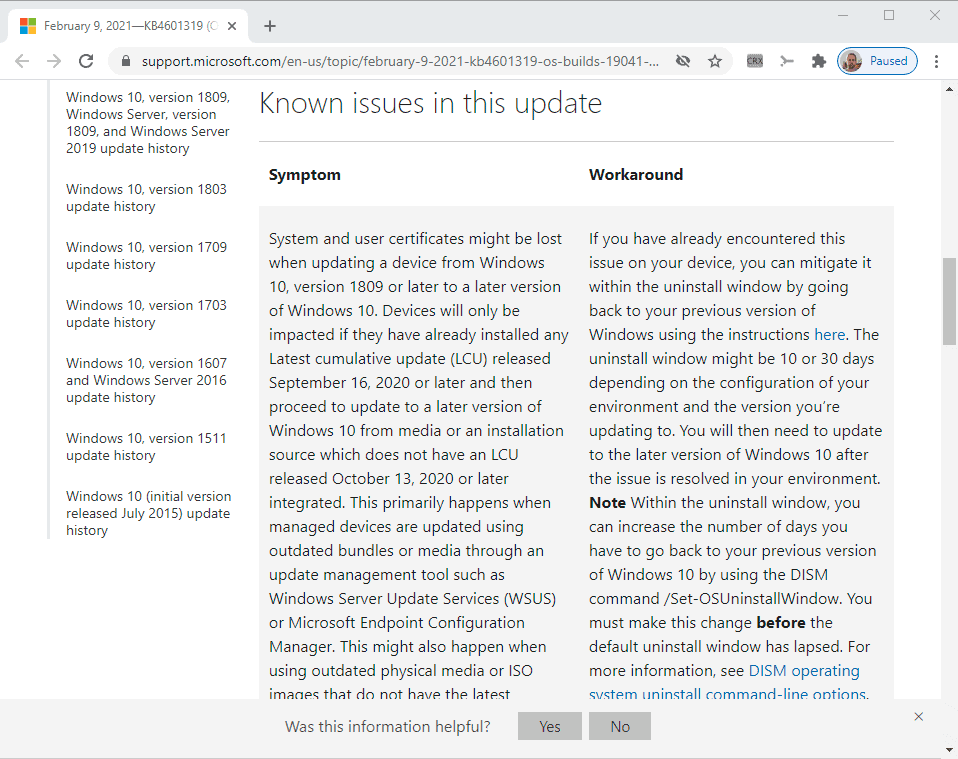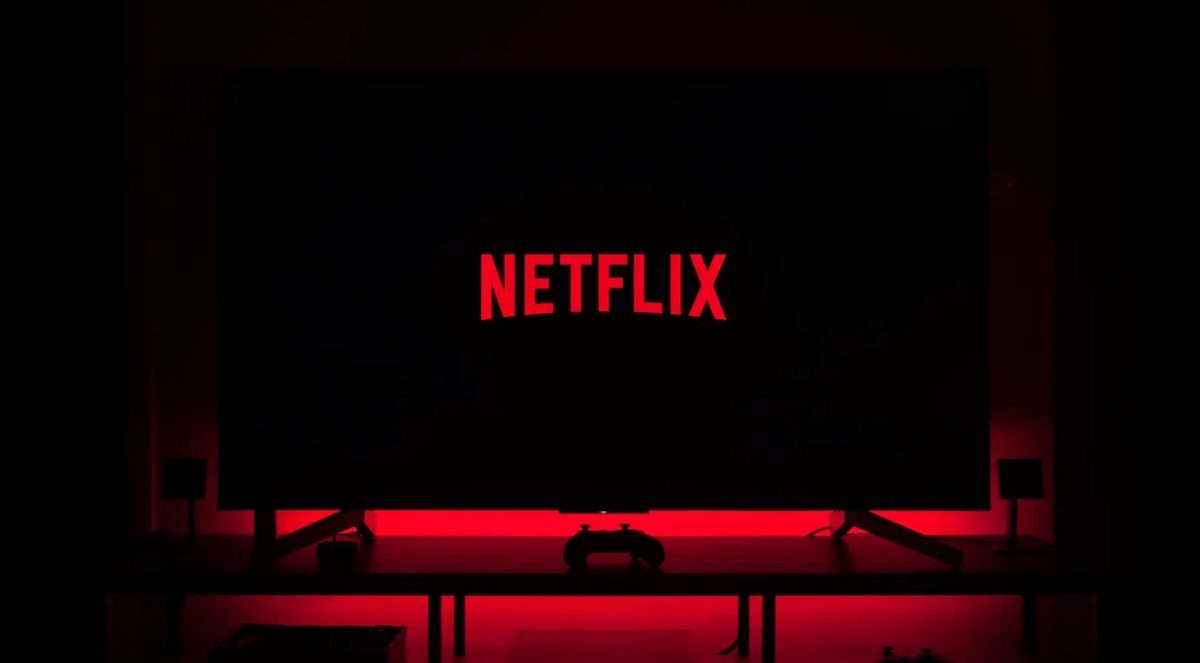Opinion: Microsoft needs to release support articles before updates

This week's patch day had a bit of a sour taste to it, and this time not because of the quality of the patches that Microsoft released. If you tried to check the support pages of the main updates for Microsoft's supported desktop client and server operating systems, you'd notice that the articles were not published yet.
The updates on the other hand were distributed via Windows Updates and other update management systems from 19:00 onward.
It is unclear why the publication of the support articles was delayed, but some articles were not published for a good hour after release. What is clear is that the sequence of events is problematic, as administrators and home users could not check what the offered updates actually included.
Did they resolve security issues and fix other non-security issues? Did Microsoft list confirmed known issues, or were not there any?
Without support articles, it is impossible to tell. One of the saner things to do in this case is to postpone the installation of updates until the support articles become available.
The solution: publish support articles early

Since this is not the first time that this is happening, it may be time to work on a solution that ensures that support articles are always published before updates are released. One easy option to ensure that is to publish the support articles in advance, for instance an hour before the updates are released by Microsoft.
The support articles don't provide security information that is actionable, that threat actors could use and exploit prior to the release of the updates. Administrators and users on the other hand could find out if updates they are about to install have known issues and whether they address issues that they experience.
Support articles can still be updated should the need arise to add last minute information to them before release. Microsoft could even label them as previews until the actual updates are released to make sure that customers understand that the article may be updated before the actual release of the patch.
Now You: What is your take on this?



















Some programmers prefer to code with little to no comment in their creations. This makes their code difficult to maintain or expand in the future, sometimes even for the original author. Technical writers have a hard time documenting software function as well for users. The only people happy with the quicker release date is the managers who encourage fast code release times.
Wish they would add a button to remove all telemetry and spying components from Windows, Office, Visual Studio.
It’s not gonna happen, for the simple reason that microsoft has no clue what they are doing or supposedly fixing. They slap something together and throw it out there, hoping that it sticks and doesn’t explode in their faces too hard. I would like to see some of their top developers and coders at work, even for just a few minutes, so I could either die laughing or die of shock seeing a bunch of monkeys trying to peel a banana. I have seen linux developers coding in real time, and THAT was impressive. People that know what they are doing, doing it fast and efficiently, for FREE..man that’s inspiring. Microsoft is a circus. A bad circus.
Whilst I’d agree that documentation should be readily available on patch release, the crux of the problem here is closed source software, free upgrades and the EULA.
For the newer operating systems waiting for a couple of weeks is the safer option in my experience (and many others) and by then the documentation is readily available and has been scrutinised.
Second mouse gets the cheese so to speak :)
We have to install the updates anyway to be on the safe side, and most peoples (private persons, small companies) don’t read the news releases, they just update because it has to be done. Those who delay updates for monthes, I do not agree with them, because they unnessecary keep security holes open much longer than it makes sense, I could understand delaying a week to profit from trouble happend to others, but not 3 to 6 monthes. I don’t care if the news releases are published an hour after the update itself, because while they are published in the west of the US during working time, for me it’s sleeping time in central europe. So anyhow, I will discover updates and news releases just next morning.
If you want to know what is in the update, you have to install the update.
I think you have to be an American to understand this bad joke. A politician said “We have to pass the bill so that you can find out what is in it.”
Several bills that were thousands of pages long, were voted on by members without reading them.
Sorry for this digression.
Microsoft needs to stfu and leave me alone. I wish there was a Windows 10 version like Windows 7, where it there is one build and only security updates. I don’t anything new added. No new dumb down uwp/webview2 nonsense. I just want the OS to run my software.
Got to dig for Apple’s update information as well. None of these companies is very transparent anymore.
@JohnIL
+1. Furthermore, Apple regularly doesn’t give as much information in their French support articles (for updates) as it does in English. I haven’t checked for other languages, but I’m sure that French speaking users are as interested as English users about what the updates are about. Apple should do a better job about that.
I second your opinion ” publish support articles early”.
Even a partially published article with a hint when there will be updated, is a must Microsoft
Microsoft is Microsoft. Who are we to try to tell them how to run their business. They take their cues from the balance sheet. As long as system uptake is rising and revenue is rising, “we are doing well”. Our job is to either learn to live with the product or give them a very clear message by abandoning their products. Unfortunately, they are smart enough to get business and education on side. “Use Windows and Office at school or home, the will probably use it at home” seems to be the current business model.
I thought by 2021, smart people would have learned to disable Windows updates entirely and update **after quite some time – 3 – 6 months** by enabling them briefly and then disabling them again.
“Without support articles, it is impossible to tell. One of the saner things to do in this case is to postpone the installation of updates until the support articles become available.”
@Jeff–Would have to agree; even if support articles preceded updates, minor/major issues occur and have been occurring with Windows 10 Updates for years. Yes, years. We’ve postponed all updates and work with the Semi-Annual upgrade which works for us. We never use the Windows Update feature, but find updates elsewhere with the myriad number of 3rd party tools available or by using standalone installers. Less work in the long run.
If users are still thinking that each and every update must be downloaded via the Windows Update feature on Windows 10, then they don’t read the news or have some Freudian fantasy that maybe MS suddenly produced an up-date that makes the OS better, not problematic.
I can’t in any way understand the rush for individual users to act as a beta tester by installing updates as soon as they come out except in the very rare case of a truly critical security update. I’m sure most would agree that the updates rarely provide anything useful and often in fact are simply provided to meet Microsoft’s marketing or telemetry needs. In any case, waiting 30 days or so solves most of these problems. I wait as long as possible, but that is a personal choice. I can say that it has been a very long time indeed since an update caused any kind of a problem for me.
Partially agree, for 0-day fixes yes. For the other patches, everybody waits at least a week anyway.
What is your take on this?
As for this report, it’s an op-ed, and as a reader I’m not a fan of those. Yet if I was a reporter, then I would likely love to write op-eds, as they need not be accountable to any truth.
As for this concern with release support articles, perhaps we shouldn’t do any updates unless we feel comfortable to do so, such as having a backup plan if something goes wrong. Hence, having to depend and trust on support articles would not be so critical.
As for recommending what Microsoft “needs to” do, I say work there for a year before speculating about such solutions, as things are often way more complicated than we assume, where a so-called solution can makes things worse. Sound familiar?
But as a customer, if you want to complain and demand what you want, then that’s a reasonable thing to do, and expected, although I bet Microsoft finds such whining rather vexing, as they likely more so trust their bots to tell them what’s going on. Yup, geeks trusting their bot over customers, imagine that. Ha.
Regardless, at this point, I’d like hear from Microsoft as to why they don’t always release support articles before updates, but I doubt they would ever tell us the truth of things. They would likely just say “we are aware of the situation and addressing the concerns of our customers”.
As for with the speculation game, perhaps Microsoft is considering in doing away with release support articles, and this was a way to test such a move. Perhaps they don’t want to be accountable for release support articles that are written wrong. Hmm, perhaps they should replace release support articles with op-ed articles. Problem solved. Ha.
Your reasoning is logical and would improve the service to customers, but Microsoft and other big companies often seems allergic to logic and good customer service.
Some small companies and single developers of handy tools have better service and more common sense, despite big companies paying high salaries to get high IQ ‘geniuses’ to work for them.
The root of the problem is that the top mangement just not care enough about good customer service and good moral behavior. Profit and certain internal relationships have a higher priority. Judge them by their actions and not their words (it is often just PR lies).
I have seen this nonsense in many companies and organisations.
@Sol Shine
I get that, yet consider that the complaining customer is all too often wrong and/or crazy mad. Good customer service means knowing how to deal with snobby/crazy/mad customers, such as those who don’t know what they want, they wanted it yesterday, they want it for free, and they think everything is always the company’s fault. And I’m not joking, as many so-called customers fit that profile. That’s actually part of the training we teach to our customer service team, which prepares them to identify and deal with the kooks, thieves, and trolls:
“A customer is someone who we want to do business with, which doesn’t include everyone who acts as if they want do business with us.”
“..treat the customer AS IF they are always right, yet don’t assume they are all customers.”
“..if they are crazy, then pretend to be agreeable, yet mirror some crazy talk back at them, but always present the appearance of empathy, understanding, and respect, without giving them anything besides ambiguous validation and comfort. For example, tell them a crazy, long story about a similar issue you had with another company.”
I think one of the biggest problems with digital services is that gullible customers don’t know what they actually signed up for, as they ignore the EULA yet trust the marketing hype. TIP: Don’t do that, and always get it in writing, as commissioned sales people tend to lie.
You make some good points.
It is true that customers can treat companies unfairly.
Fake reviews from mad customers are a example. Buying stuff to use it for a few days and then return it, is another example.
Such bad customers can destroy small companies who are honest, and offer great services or products.
And you do have the customers with mental health issues. They also cause alot of problems for their neighbours and family (Your company has a effective training to deal with them, I see). More knowledge about mental health diseases and investment in healthcare and prevention can help here.
But in most cases the company is in a more powerful position than the customers, and there are many examples of companies treating customers like dirt.
The big tech companies closing vital online accounts with a short warning and no explanation is an example.
Microsoft using dark pattern tricks to force Windows 7 users to upgrade to Windows 10 with it’s forced collecting of private data is another example.
The abuse of the public by big tech companies with their massive collecting of private data and use of algoritmes, is a much bigger problem than the problem of bad customers.
It is a global problem and getting worse as more services and products are going digital.
I can even argue that the global problems of climate change and the annual millions of deaths and diseases from pollution are caused by companies putting profit ahead of the health of their customers.
Bad customers are a problem, but bad big companies are a much more serious problem.
The irony is that often the customers are partly to blame. They want the lowest price. So they sell their privacy for ‘free’ dervices. They buy the cheapest stuff made in China where there is weakly enforced environmental and product safety laws.
The problem is that people who do care about privacy, the environment and their health, can not always escape the consequences of all this nonsense.
@Sol Shine
I can likewise make an argument that climate change and the deaths caused from pollution are simply caused by all too many people.
“Give the people what they want” “Power to the people”
The machine feeds the people, the people serve the machine, the machine kills everything.
The best and easiest thing we can do right now as people, is not bring new people into this world, as we can’t sanely sustain all the people we have now.
Next to that, all people should make it an imperative to live close to work and supplies, thus ending the need to have a car all the time.
Also note, even if we had endless, clean, cheap energy, then the people would breed even more and exploit everything even faster.
Can you imagine? I can.
Investing in clean energy ASAP is just a small part of what could be done to help the environment survive.
Not eating beef is a good idea, but just a small part of what could be done to help the environment survive.
And destroying the machine is the wrong answer, as the people would turn to burning all that’s left of the forests, and furthermore resulting in the worst pollution.
Can you imagine? I can.
We need clean machines and far less people.
But sadly, it’s easier and much more popular to simply blame companies and governments, as most people keep on living and breeding as they have.
> The problem is that people who do care about privacy, the environment and their health, can not always escape the consequences of all this nonsense.
Yes, but is that often because they have kids they can’t afford?
People will do most anything to protect their families, even if it means destroying the Earth.
Thus, I say break that cycle and don’t have a family.
If you want a family, adopt, and teach those kids to do the same when they grow up.
In the end I do what I can do to not make things worse, and I don’t expect anyone to do the same.
They don’t want their customers to know what they are doing.
Their changes are to ensure they know EVERYTHING their customers are doing.